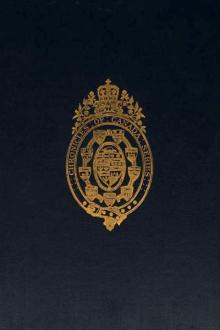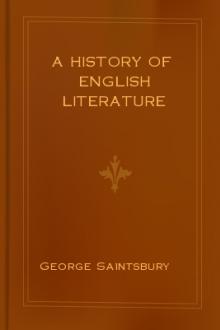The Dawn of Canadian History by Stephen Leacock (each kindness read aloud .TXT) 📕

Read free book «The Dawn of Canadian History by Stephen Leacock (each kindness read aloud .TXT) 📕» - read online or download for free at americanlibrarybooks.com
- Author: Stephen Leacock
- Performer: -
Read book online «The Dawn of Canadian History by Stephen Leacock (each kindness read aloud .TXT) 📕». Author - Stephen Leacock
All this shows that the superiority of the Iroquois over their enemies lay in organization. In this they were superior even to their kinsmen the Hurons. All Indian tribes kept women in a condition which we should think degrading. The Indian women were drudges; they carried the burdens, and did the rude manual toil of the tribe. Among the Iroquois, however, women were not wholly despised; sometimes, if of forceful character, they had great influence in the councils of the tribe. Among the Hurons, on the other hand, women were treated with contempt or brutal indifference. The Huron woman, worn out with arduous toil, rapidly lost the brightness of her youth. At an age when the women of a higher culture are still at the height of their charm and attractiveness the woman of the Hurons had degenerated into a shrivelled hag, horrible to the eye and often despicable in character. The inborn gentleness of womanhood had been driven from her breast by ill-treatment. Not even the cruelest of the warriors surpassed the unhallowed fiendishness of the withered squaw in preparing the torments of the stake and in shrieking her toothless exultation beside the torture fire.
Where women are on such a footing as this it is always ill with the community at large. The Hurons were among the most despicable of the Indians in their manners. They were hideous gluttons, gorging themselves when occasion offered with the rapacity of vultures. Gambling and theft flourished among them. Except, indeed, for the tradition of courage in fight and of endurance under pain we can find scarcely anything in them to admire.
North and west from the Algonquins and Huron-Iroquois were the family of tribes belonging to the Athapascan stock. The general names of Chipewyan and Tinne are also applied to the same great branch of the Indian race. In a variety of groups and tribes, the Athapascans spread out from the Arctic to Mexico. Their name has since become connected with the geography of Canada alone, but in reality a number of the tribes of the plains, like the well-known Apaches, as well as the Hupas of California and the Navahos, belong to the Athapascans. In Canada, the Athapascans roamed over the country that lay between Hudson Bay and the Rocky Mountains. They were found in the basin of the Mackenzie river towards the Arctic sea, and along the valley of the Fraser to the valley of the Chilcotin. Their language was broken into a great number of dialects which differed so widely that only the kindred groups could understand one another's speech. But the same general resemblance ran through the various branches of the Athapascans. They were a tall, strong race, great in endurance, during their prime, though they had little of the peculiar stamina that makes for long life and vigorous old age. Their descendants of to-day still show the same facial characteristics—the low forehead with prominent ridge bones, and the eyes set somewhat obliquely so as to suggest, though probably without reason, a kinship with Oriental peoples.
The Athapascans stood low in the scale of civilization. Most of them lived in a prairie country where a luxuriant soil, not encumbered with trees, would have responded to the slightest labour. But the Athapascans, in Canada at least, knew nothing of agriculture. With alternations of starvation and rude plenty, they lived upon the unaided bounty of tribes of the far north, degraded by want and indolence, were often addicted to cannibalism.
The Indians beyond the mountains, between the Rockies and the sea, were for the most part quite distinct from those of the plains. Some tribes of the Athapascans, as we have seen, penetrated into British Columbia, but the greater part of the natives in that region were of wholly different races. Of course, we know hardly anything of these Indians during the first two centuries of European settlement in America. Not until the eighteenth century, when Russian traders began to frequent the Pacific coast and the Spanish and English pushed their voyages into the North Pacific,—the Tlingit of the far north, the Salish, Tsimshian, Haida, Kwakiutl-Nootka and Kutenai. It is thought, however, that nearly all the Pacific Indians belong to one kindred stock. There are, it is true, many distinct languages between California and Alaska, but the physical appearance and characteristics of the natives show a similarity throughout.
The total number of the original Indian population of the continent can be a matter of conjecture only. There is every reason, however, to think that it was far less than the absurdly exaggerated figures given by early European writers. Whenever the first explorers found a considerable body of savages they concluded that the people they saw were only a fraction of some large nation. The result was that the Spaniards estimated the inhabitants of Peru at thirty millions. Las Casas, the Spanish historian, said that Hispaniola, the present Hayti, had a population of three millions; a more exact estimate, made about twenty years after the discovery of the island, brought the population down to fourteen thousand! In the same way Montezuma was said to have commanded three million Mexican warriors—an obvious absurdity. The early Jesuits reckoned the numbers of the Iroquois at about a hundred thousand; in reality there seem to have been, in the days of Wolfe and Montcalm, about twelve thousand. At the opening of the twentieth century there were in America north of Mexico about 403,000 Indians, of whom 108,000 were in Canada. Some writers go so far as to say that the numbers of the natives were probably never much greater than they are to-day. But even if we accept the more general opinion that the Indian population has declined, there is no evidence to show that the population was ever more than a thin scattering of wanderers over the face of a vast country. Mooney estimates that at the coming of the white man there were only about 846,000 aborigines in the United States, 220,000 in British America, 72,000 in Alaska, and 10,000 in Greenland, a total native population of 1,148,000 from the Mississippi to the Atlantic.
The limited means of support possessed by the natives, their primitive agriculture, their habitual disinclination to settled life and industry, their constant wars and the epidemic diseases which, even as early as the time of Jacques Cartier, worked havoc among them, must always have prevented the growth of a numerous population. The explorer might wander for days in the depths of the American forest without encountering any trace of human life. The continent was, in truth, one vast silence, broken only by the roar of the waterfall or the cry of the beasts and birds of the forest.
There are many stories of the coming of white men to the coasts of America and of their settlements in America long before the voyage of Christopher Columbus. Even in the time of the Greeks and Romans there were traditions and legends of sailors who had gone out into the 'Sea of Darkness' beyond the Pillars of Hercules—the ancient name for the Strait of Gibraltar—and far to the west had found inhabited lands. Aristotle thought that there must be land out beyond the Atlantic, and Plato tells us that once upon a time a vast island lay off the coasts of Africa; he calls it Atlantis, and it was, he says, sunk below the sea by an earthquake. The Phoenicians were wonderful sailors; their ships had gone out of the Mediterranean into the other sea, and had reached the British Isles, and in all probability they sailed as far west as the Canaries. We find, indeed, in classical literature many references to supposed islands and countries out beyond the Atlantic. The ancients called these places the Islands of the Blessed and the Fortunate Isles. It is, perhaps, not unnatural that in the earlier writers the existence of these remote and mysterious regions should be linked with the ideas of the Elysian Fields and of the abodes of the dead. But the later writers, such as Pliny, and Strabo, the geographer, talked of them as actual places, and tried to estimate how many Roman miles they must be distant from the coast of Spain.
There were similar legends among the Irish, legends preserved in written form at least five hundred years before Columbus. They recount wonderful voyages out into the Atlantic and the discovery of new land. But all these tales are mixed up with obvious fable, with accounts of places where there was never any illness or infirmity, and people lived for ever, and drank delicious wine and laughed all day, and we cannot certify to an atom of historic truth in them.
Still more interesting, if only for curiosity's sake, are weird stories that have been unearthed among the early records of the Chinese. These are older than the Irish legends, and date back to about the sixth century. According to the Chinese story, a certain Hoei-Sin sailed out into the Pacific until he was four thousand miles east of Japan. There he found a new continent, which the Chinese records called Fusang, because of a certain tree—the fusang tree,—out of the fibres of which the inhabitants made, not only clothes, but paper, and even food. Here was truly a land of wonders. There were strange animals with branching horns on their heads, there were men who could not speak Chinese but barked like dogs, and other men with bodies painted in strange colours. Some people have endeavoured to prove by these legends that the Chinese must have landed in British Columbia, or have seen moose or reindeer, since extinct, in the country far to the north. But the whole account is so mixed up with the miraculous, and with descriptions of things which certainly never existed on the Pacific coast of America, that we can place no reliance whatever upon it.
The only importance that we can attach to such traditions of the discovery of unknown lands and peoples on a new continent is their bearing as a whole, their accumulated effect, on the likelihood of such discovery before the time of Columbus. They at least make us ready to attach due weight to the circumstantial and credible records of the voyages of the Norsemen. These stand upon ground altogether different from that of the dim and confused traditions of the classical writers and of the Irish and Chinese legends. In fact, many scholars are now convinced that the eastern coast of Canada was known and visited by the Norsemen five hundred years before Columbus.
From time immemorial the Norsemen were among the most daring and skilful mariners ever known. They built great wooden boats with tall, sweeping bows and sterns. These ships, though open and without decks, were yet stout and seaworthy. Their remains have been found, at times lying deeply buried under the sand and preserved almost intact. One such vessel, discovered on the shore of Denmark, measured 72 feet in length. Another Viking ship, which was dug up in Norway, and which is preserved in the museum at





Comments (0)